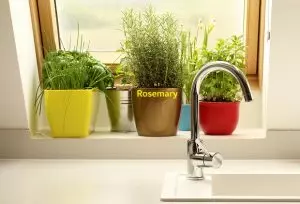15 tips to help grow the best large tomatoes
Larger varieties of tomatoes are easy enough to grow but to get them at a point where they crop readily and produce good fruit can be a challenge even for the best gardeners!
There are numerous diseases and pests which attack tomatoes but pulling out the chemical spray bottle isn't the ideal solution and quite possibly won't work anyway. Furthermore, if your plants start out healthy and strong, then keeping them well nourished and happy will mean less pests and disease will attack your plants.
If your tomatoes are not performing, then try some of these tips to help get trusses of red tomatoes ballooning from your plants again:
- Timing – Grow them in season. Tomatoes like middle of the range temperatures 20 – 30 degrees celsius. You can grow them outside of these ranges but performance will be limited. That's why in warmer climates even though tomatoes will grow all year, they will do best in winter. In cold climates, you will not grow tomatoes until spring (unless you create an artificial climate).
- Pruning – Prune diseased or dying leaves and brances regularly to help prevent spread.
- Watering – Tomatoes will grow well in heavy or light soils – water less in heavy and water more in light. Keep tomato plants well watered – regular watering is very important and is often overlooked by backyard tomato growers. Drying potting mix or soil will stress plants making them weak and susceptible to diseases and pests. Try to water from the base of the plant and not over the leaves to help prevent spreading fungal diseases.
- Soil – Grow tomatoes in different locations each time to help stop the build-up of soil borne diseases and pests (like nematodes).
- Compost – Home-made compost is riddled with good organisms and nutrients to help keep tomatoes healthy. Use compost pre-planting and as a top dressing half season.
- Companions – Planting companion plants like basil and marigolds next to your tomatoes (even in the same pot) will help big time in repelling pests/diseases and attract predatory insects (good insects).
- Pots – If you have real trouble with garden soil diseases, try growing tomatoes in large pots. Replace the potting mix each season with new. I buy the cheap potting mix and then add a few handfuls of fertiliser – this is reasonably cost effective, especially considering organically grown tomatoes can cost in excess of $10 per kilo!
- Sun – Full sun is best but some sheltering from the afternoon sun in hot climates will help.

- Support – Don't let tomatoes sprawl on the ground it's too easy for pests and disease to invade. Give tomatoes a good trellis, cage, or stake as support.
- Food – Tomatoes are hungry plants, in particular, when starting to produce fruit so they need regular feeding with a fertiliser high in potassium. Don't overfeed with too much nitrogen or the plants will grow to leafy and get sick so look for a fertiliser lower in "N" and higher in "K." A fortnightly feed according to manufacture's instructions should be fine but if the plants look a little pale than a weekly feed until they look better is a good idea.
- Lime – Adding garden lime (calcium) to the soil pre planting and then again half way through the season as a top dress will help to strengthen your tomato plants.
- Inspecting – Daily visits to your plants and close inspections can find small outbreaks of pests (like caterpillars) and action taken, like picking off by hand, before they damage the fruit.
- Variety – There are varieties of larger type tomatoes that have better disease resistance than others. Choosing hardier or hybrid varieties will improve yields.
- Netting – If you need to net for crop protection, then covering the whole plant rather than individual fruit bagging is best.
- Spraying – I prefer NOT to use any sprays, but if you are desparate, some low toxic sprays to use are pyrethrum to control caterpillars and copper based fungicides to control foliar diseases.
Are you a tomato guru and know some more tips? Come on then – share your tips below in our comments section!












